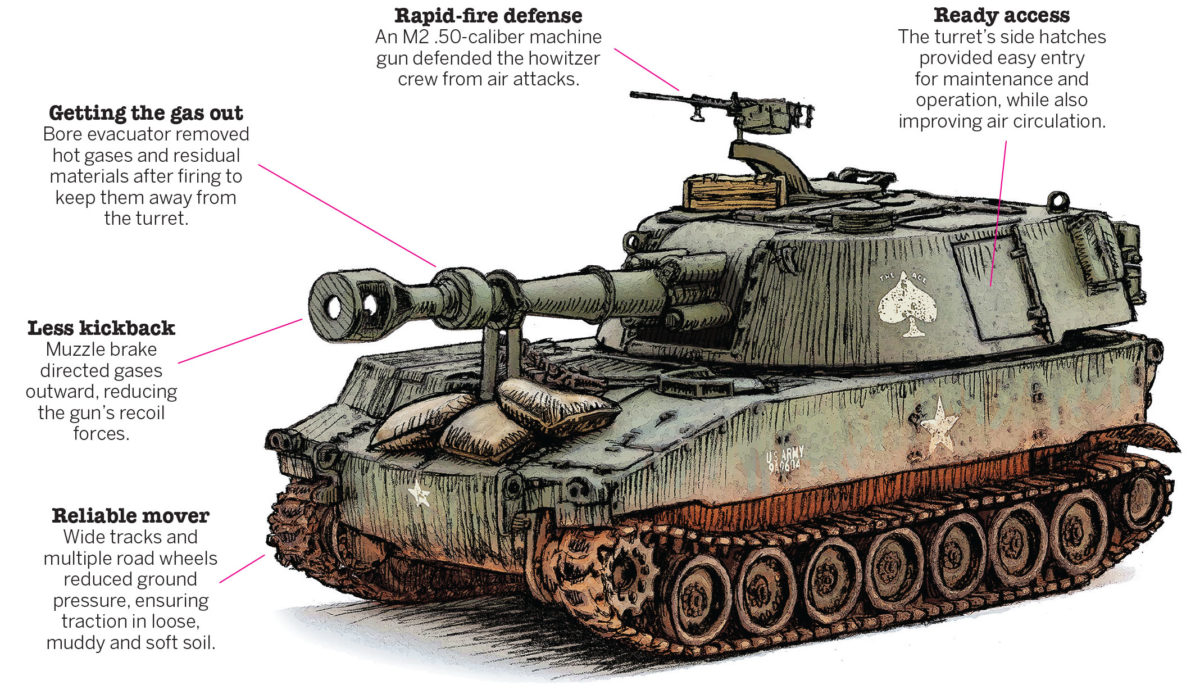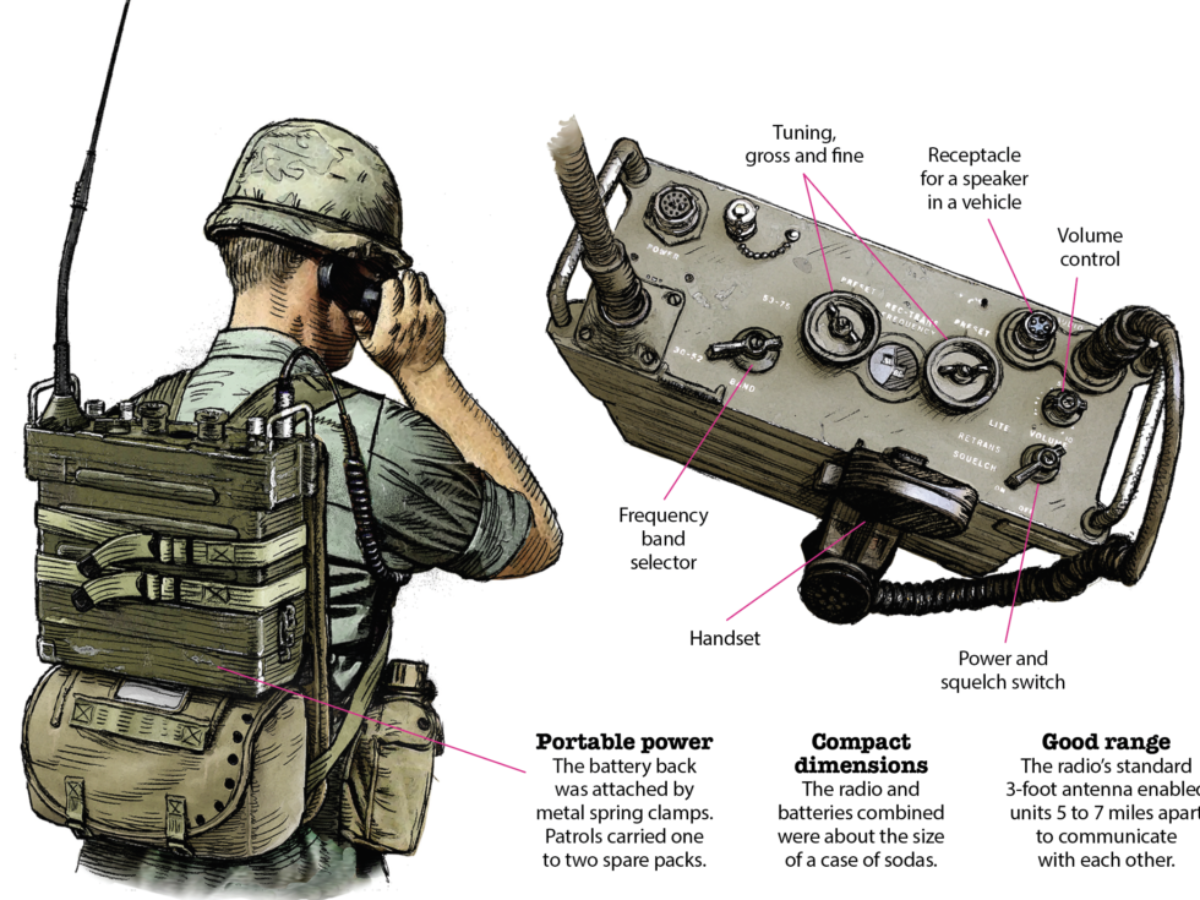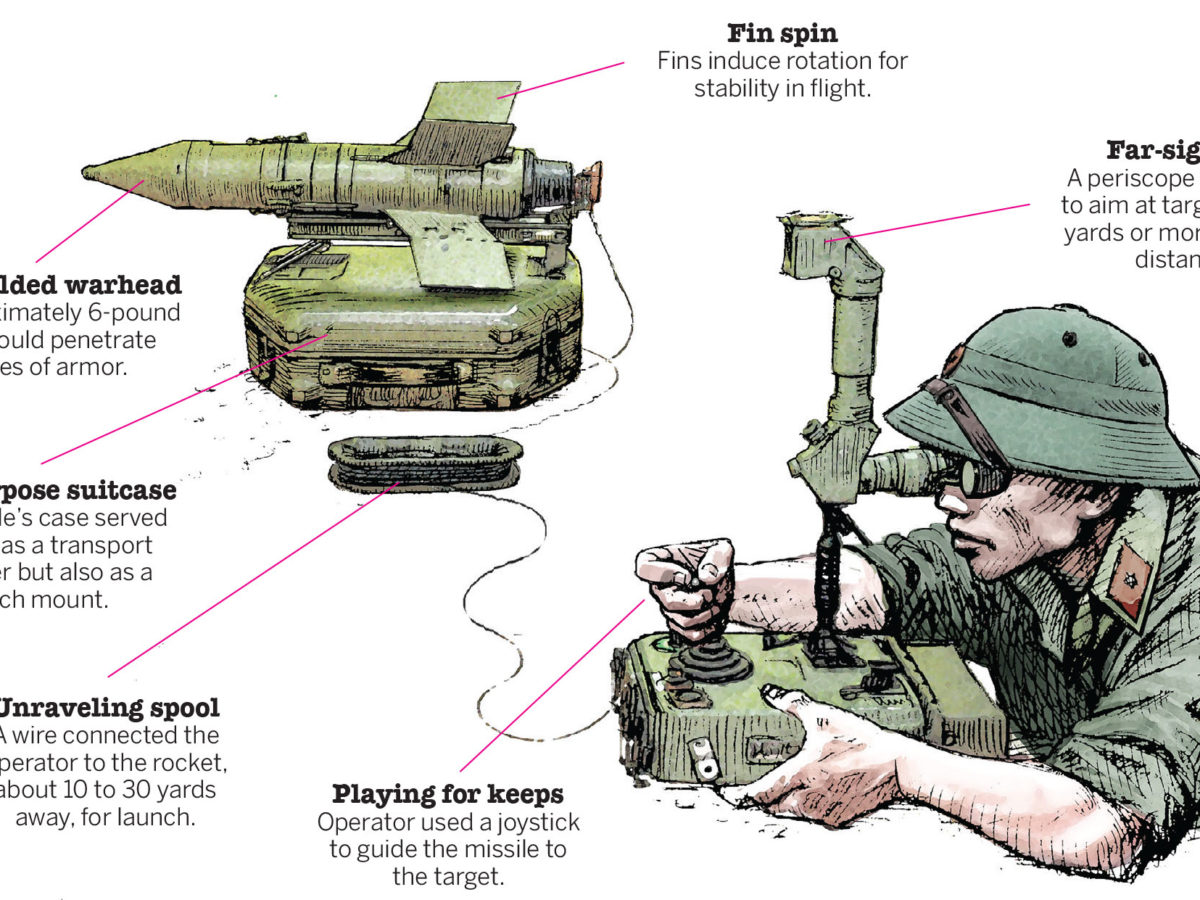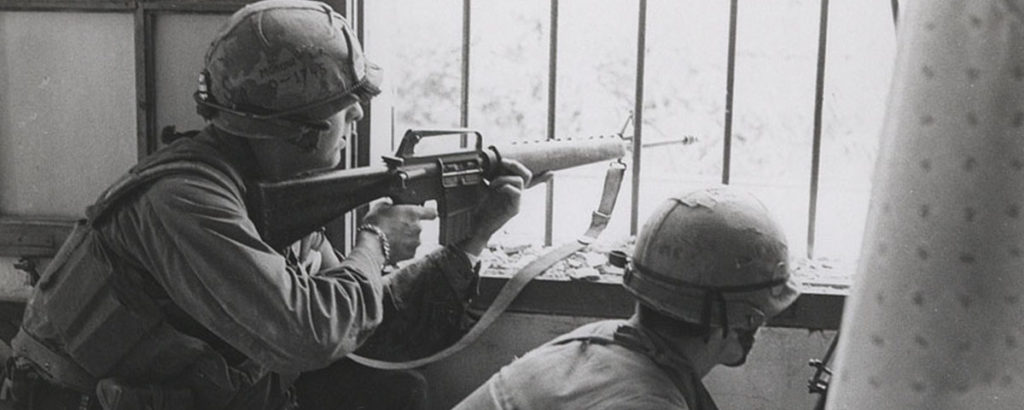Recommended for you
In the summer and fall of 1967, the 4th Battalion, 11th Marine Regiment, 1st Marine Division, equipped with the M109 howitzer, was firing almost daily at North Vietnamese artillery positions on the other side of the Demilitarized Zone separating the two Vietnams. The M109 155 mm self-propelled (tracked) howitzer was almost the perfect weapon for counterbattery missions because of its thick armor protection. During the communists’ 1968 Tet Offensive, the 4th Battalion provided critical fire support for the Marines fighting in Hue in northern South Vietnam.
Intended to replace all M114 towed 155 mm howitzers, the M109 was born from a 1952 Army requirement for a self-propelled howitzer capable of rapid mobility to keep up with armored and mechanized units. It entered production in 1962. The vehicle’s General Motors Detroit Diesel engine provided greater range than that of its predecessor, the M44 howitzer. About an inch of armor protected the chassis and turret.
The M109 used the same firing table as the M114 towed howitzer for calculating the gun’s angle during targeting. Its M126 155 mm gun could handle nuclear shells. Each M109 howitzer was paired with an M548 tracked ammunition carrier.
GET HISTORY’S GREATEST TALES—RIGHT IN YOUR INBOX
Subscribe to our HistoryNet Now! newsletter for the best of the past, delivered every Monday and Thursday.
The largely roadbound M109 was often restricted to base camps and direct support missions for mechanized units because of Vietnam’s rough terrain, the vehicle’s limited river crossing capability and the U.S. emphasis on helicopter operations. Although not helo-transportable, Army and Marine M109s were in virtually every battle in northern and central South Vietnam, defending bases and providing counterbattery fire against North Vietnamese threats.
Since the initial production model’s service in Vietnam, the M109 has undergone many improvements, acquiring a longer-barreled howitzer with more range and improved projectiles. It is the world’s most widely used self-propelled howitzer, with variants expected to remain in service into the 2030s.
This article appeared in the June 2020 issue of Vietnam magazine.
Vehicle weight: 26 tons
Vehicle length: 21 ft., 8½ in.
Max. speed: 35 mph
Vehicle range: 240 miles
Bore: 155 mm Barrel length: 12 ft.
Ammunition: high explosive, smoke, illumination
Rate of fire: One round per minute sustained
Shell range: 14.6 km (9 miles)
Armament: M2 .50-caliber machine gun
historynet magazines
Our 9 best-selling history titles feature in-depth storytelling and iconic imagery to engage and inform on the people, the wars, and the events that shaped America and the world.









